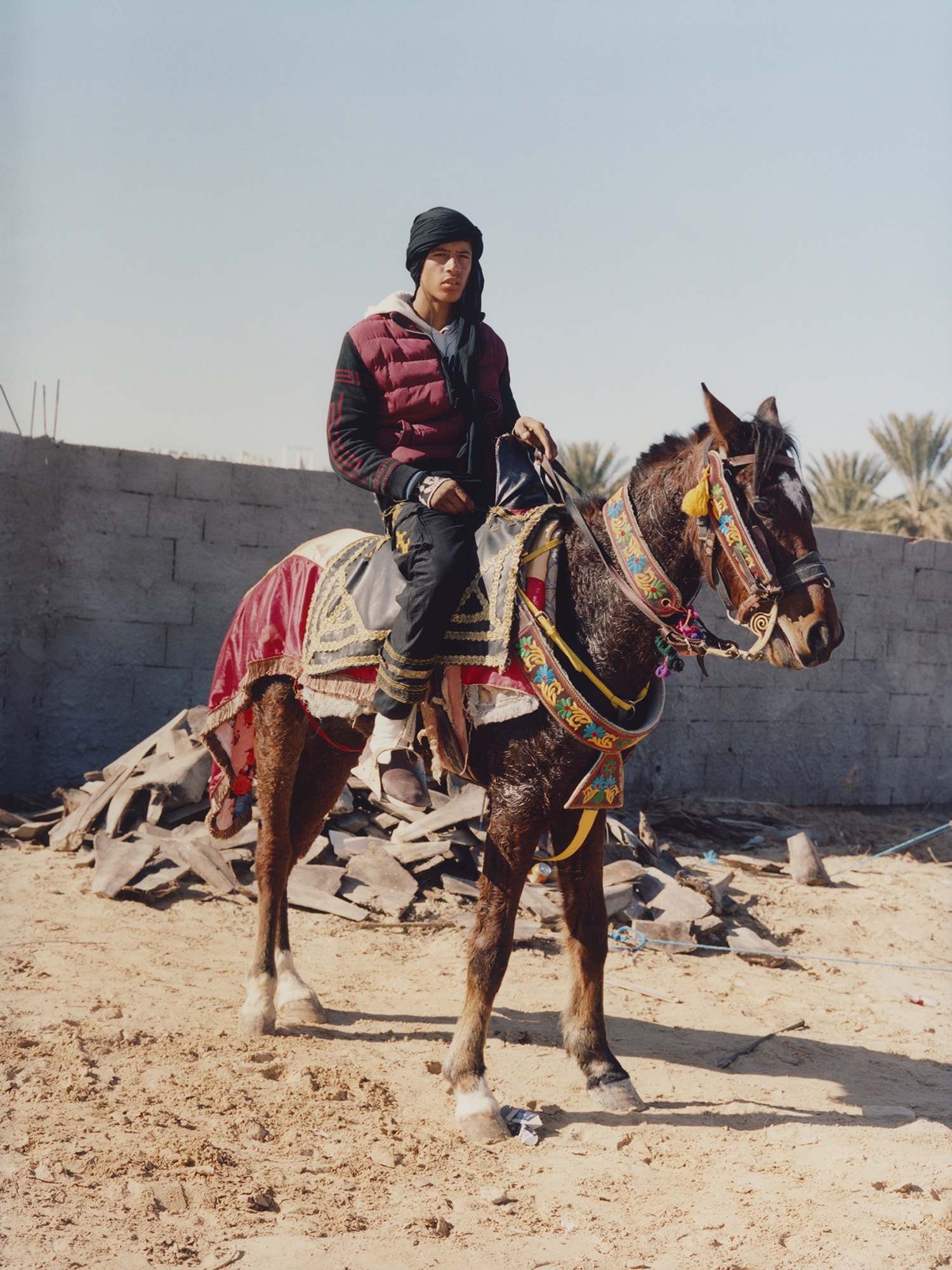The Festival of the Sahara: A cultural clash of old and new
- Text by Eva Clifford
- Photography by Sophie Jane Stafford

Each year, thousands flock to the desert oasis of Douz, Tunisia to celebrate northern African Berber traditions at a four-day festival. When stumbling across videos of the festival on YouTube, British photographer Sophie Jane Stafford was instantly intrigued. “I was drawn to it because it was depicted as the biggest celebration in the Sahara of desert culture,” Stafford says.
Starting out as a camel festival in 1910, the event eventually evolved into the International Festival of the Sahara and has become an important part of Tunisian heritage, celebrating nomadic traditions. Across the four days, horse and camel racing, falconry, dancing and parades all take place in the H’naiech stadium, encircled by Bedouin tents.


Arriving at the festival, Stafford says the atmosphere was completely different to how she imagined. “Not in a bad way,” she says. “Just a more a youthful, chaotic side dominated the festival rather than what was depicted on articles and tourism websites.”
“The clear mix of old and the new make the festival something quite special to encounter,” elaborates Stafford, who was keen to document this contemporary aspect of Tunisia. “The young local youth who make it their own by showcasing their skills and making new traditions. Fearless, unpredictable amateur driving shows bringing in the crowd.”
Stafford spent five days altogether in Douz during the festival and New Year, managing to get by with bits of French and help from people she met along the way. While the atmosphere was generally family-friendly earlier on in the day, Stafford says the mood changed as the day wore on.


“One of the problems was that it was very busy with hundreds of people at the festival,” she says. “The crowd was packed into the grandstands, and at times this was claustrophobic and hard to move, let alone take any photographs.”
Stafford adds that it was actually the aftermath that was one of the more interesting parts of the festival, as “the crowd became their own entertainment and carried on the festival after the main event ended.”
One shot captured on the last day of the festival shows a row of local kids doused in sunlight, dressed in costumes. “The kids had all taken part in the final show,” says Stafford. “At this point, they were all lined up to hand back their costumes and get paid for their time. This is only a small selection of the line that was a good hundred kids waiting to get paid.”






More of Sophie’s work can be seen on her official website.
Enjoyed this article? Like Huck on Facebook or follow us on Twitter.
Latest on Huck

The inner-city riding club serving Newcastle’s youth
Stepney Western — Harry Lawson’s new experimental documentary sets up a Western film in the English North East, by focusing on a stables that also functions as a charity for disadvantaged young people.
Written by: Isaac Muk

The British intimacy of ‘the afters’
Not Going Home — In 1998, photographer Mischa Haller travelled to nightclubs just as their doors were shutting and dancers streamed out onto the streets, capturing the country’s partying youth in the early morning haze.
Written by: Ella Glossop

See winners of the World Press Photo Contest 2025
A view from the frontlines — There are 42 winning photographers this year, selected from 59,320 entries.
Written by: Zahra Onsori

Inside Kashmir’s growing youth tattoo movement
Catharsis in ink — Despite being forbidden under Islam, a wave of tattoo shops are springing up in India-administered Kashmir. Saqib Mugloo spoke to those on both ends of the needle.
Written by: Saqib Mugloo

The forgotten women’s football film banned in Brazil
Onda Nova — With cross-dressing footballers, lesbian sex and the dawn of women’s football, the cult movie was first released in 1983, before being censored by the country’s military dictatorship. Now restored and re-released, it’s being shown in London at this year’s BFI Flare film festival.
Written by: Jake Hall

In the dressing room with the 20th century’s greatest musicians
Backstage 1977-2000 — As a photographer for NME, David Corio spent two decades lounging behind the scenes with the world’s biggest music stars. A new photobook revisits his archive of candid portraits.
Written by: Miss Rosen